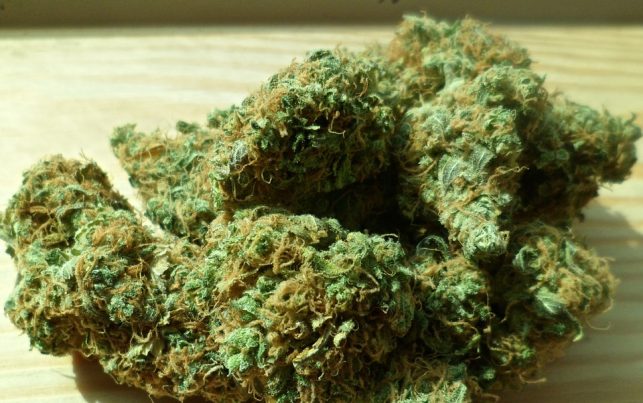
Tetrahydrocannabinol sources, health risks
Friday, October 27, 2017 by Michelle Simmons
http://www.naturalpedia.com/tetrahydrocannabinol-sources-health-risks.html

Tetrahydrocannabinol is the active chemical in cannabis, which is responsible for plant’s psychoactive properties. It is also one of the oldest known hallucinogenic drugs. Cannabis can be obtained from the flowering tops and leaves of the plant known as Cannabis sativa. This hemp plant has been used all over the world for its fibers for centuries. Cannabis is more widely known as the source of the marijuana drug.
Tetrahydrocannabinol is an amber or gold-colored glassy solid when cold. On the other hand, when it is warmed, it becomes gluey and sticky. It can be consumed through smoking, vaporizers, and edibles such as baked goods, teas, or tinctures.
Tetrahydrocannabinol is also known as THC and delta9-tetrahydrocannabinol.
Tetrahydrocannabinol has a molecular formula of C21H30O2.
Harmful effects that can be caused by tetrahydrocannabinol
According to an article by SelfHacked.com, THC can cause schizophrenia-like symptoms, altered perception, increased anxiety, slowed recall time, decreased mental performance, and increased cortisol. The use of tetrahydrocannabinol can cause impairment in the working memory. It can also increase the chances of developing bipolar disorder and manic episodes. Moreover, THC may reversibly block synaptic neuroplasticity in the nucleus accumbens and hippocampus. Continuous use of this substance can also decrease the overall synthesis of dopamine, which results to reduction of motivation. It may also impair creativity and divergent thinking.
Body systems harmed by tetrahydrocannabinol
There are a few body systems harmed by tetrahydrocannabinol. According to an article by LeafScience.com, long-term effects of THC can harm the respiratory system. Smoking marijuana can cause cough, phlegm, more constant cold, and bronchitis. It also weakens the immune system of the lungs and increases the risk of infection. Moreover, the substance can be harmful to the cardiovascular system. It can increase the heart rate by 20 to 100 percent, raise blood pressure when sitting, and lower blood pressure while standing. Those with existing heart disease, the risk of altered heart rhythms or heart attack may be increased. THC can also be bad for the brain and nervous system. Chronic use of the substance has been linked to impairments of attention, memory, decision making, and social behavior. THC can also be addictive and those who have taken it for a long time may experience withdrawal symptoms if they stop using it. The symptoms include irritability, decreased appetite, sleeplessness, drug craving, and anxiety.
Other harmful effects of tetrahydrocannabinol include panic attacks, red or bloodshot eyes, dry mouth, dizziness, sedation, drowsiness, motor impairment such as coordination, reaction time, and driving, agitation, nausea, vomiting, paranoia, delusions, and hallucinations.
Where to learn more
- 8 Evidence Based Medical Benefits Of THC
- Study Shows THC Could Remove Alzheimer’s Plaques From The Brain
- THC from cannabis found to dramatically slow memory loss by protecting brain cells
- Study: cannabis compound might have use as an HIV drug
Summary
Tetrahydrocannabinol is the active chemical in cannabis, which is responsible for cannabis’ psychoactive properties. Cannabis can be obtained from the flowering tops and leaves of the plant known as Cannabis sativa. THC is an amber or gold-colored glassy solid when cold. On the other hand, when it is warmed, it becomes gluey and sticky. It can be used by smoking, vaporizers, and edibles such as baked goods, teas, or tinctures.
Tetrahydrocannabinol is harmful because it can cause schizophrenia-like symptoms, altered perception, increased anxiety, slowed recall time, decreased mental performance, and increased cortisol.
Tetrahydrocannabinol can be harmful to the respiratory, immune, cardiovascular, and nervous systems.
Tetrahydrocannabinol can also cause panic attacks, red or bloodshot eyes, dry mouth, dizziness, sedation, drowsiness, motor impairment such as coordination, reaction time, and driving, agitation, nausea, vomiting, paranoia, delusions, and hallucinations.
Sources include:
Tagged Under: Tags: tetrahydrocannabinol






